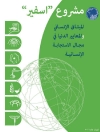This book explores pain in a number of ways. At the heart of the book is an extension of Melzack’s neuromatrix theory of pain into the social, cultural, and economic fields. Specific assemblages involving varied institutions, flows of capital, encounters, and social and economic structures provide a framework for the formation of pain, its perception, experience, meaning, and cultural production. Complementing the extended neuromatrix is a second theory, focussed on the propensity of western market capitalism to seek out new areas of life to subsume to capital. Pain is one such life area that is now ripe for exploitation.
Although the book has theory at its heart, it draws extensively on case studies to identify the contradictions and complexities. Case studies are drawn from accounts of drug use in varied contexts such as prescription drugs, methamphetamine use, oxycodone use in North America, and the global rise of the medicinal cannabis marketplace.
Jadual kandungan
Chapter 1: Introduction.- Chapter 2: The extended pain neuromatrix.- Chapter 3: Oxycodone epidemic.- Chapter 4: Global cannabis markets.- Chapter 5: Over-the-counter (OTC) consumers over a barrel.- Chapter 6: Affective economy.- Chapter 7: Reconceptualising the demand for pain relief.- Chapter 8: Regulating pain, regulating drug markets and harm reduction.- Chapter 9: Conclusion.
Mengenai Pengarang
John Fitzgerald is Associate Professor at the University of Melbourne, Australia, and an expert in alcohol and drug policy. His research focusses on the lived experience and cultural significance of psychoactive substance use, ranging across hallucinogenics, stimulants, opiates and alcohol. He has disciplinary expertise in ethnography, social science research methods, continental philosophy, discourse analysis, policing and health promotion. He often appears in the media as an expert commentator on matters relating to drug policy, policing and health.












